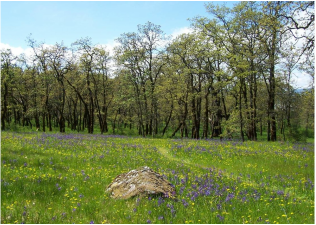|
Community interactions in range-expanding species
As species move into new locations due to anthropogenic change, they leave interacting species behind or pick up new associations along the way. As a result, species experience a novel set of community interactions in new locations. Depending on if positive interactions are lost or gained, range-expanding species may experience ecological release or face biotic resistance in their new locations. We are exploring a recent range expansion of an oak gall-forming wasp (Neuroterus saltatorius) that is outbreaking in its expanded range. We ask how community interactions (i.e., with enemies, competitors, and host plants) are altered, and if altered interactions cause ecological release. We conduct this work in western oak ecosystems, including the threatened Garry oak ecosystem on Vancouver Island, BC. This work is funded by the National Geographic Society and the National Science Foundation We collaborate with Tom Powell (Binghamton University) and Jessica Hellmann (University of Minnesota) on this research. Relevant publications: 2013: Prior KM, Hellmann JJ. Does enemy loss cause release? A biogeographical comparison of parasitoid effects on an introduced insect. Ecology 94:1015-1024. 2012: Hellmann JJ, Prior KM, Pelini SL. The influence of species interactions on geographic range change under climate change. Annals of the New York Academy of Sciences 1249:18-28. 2010: Prior KM, Hellmann, JJ. Impact of an invasive oak gall wasp on a native butterfly: a test of plant-mediated competition. Ecology 91:3284-3293. |



